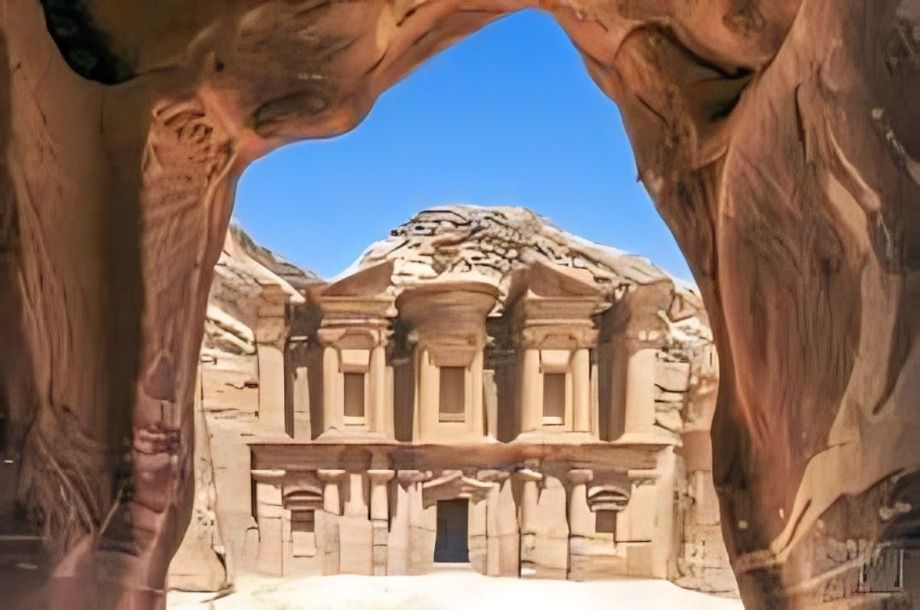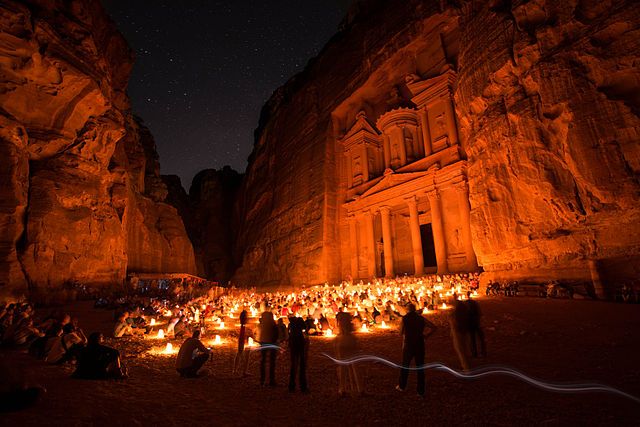
“
Petra, Jordan, known as the "Rose City," is one of the world's most mesmerizing ancient sites. Hidden for centuries and only rediscovered in 1812, Petra offers a unique glimpse into the ingenuity and artistry of the Nabataean civilization. Beyond its beauty, it’s a testament to human innovation in an unforgiving desert landscape. This blog uncovers 20 amazing facts about Petra, Jordan, revealing secrets, legends, and marvels that make it one of the World's New Seven Wonders. Dive in to discover the wonders of Petra!1
1
”
Petra, a historic city in southern Jordan, is renowned for its rock-cut architecture and rose-colored sandstone. The "Rose City" is a UNESCO World Heritage Site and a New 7 Wonder.1
Hidden in the mountains, Petra remained largely unknown to the Western world until Swiss explorer Johann Ludwig Burckhardt rediscovered it in 1812, reviving global interest in this ancient marvel. 2
The city’s iconic Treasury, or Al-Khazneh, carved from rose-colored rock, is Petra's most famous structure and may have been a royal tomb or an elaborate temple for Nabataean gods. 3
Spanning over 100 square miles, Petra is four times the size of Manhattan, with around 85% still unexcavated. Once the Nabataean capital, it was home to about 20,000 people. 4

Petra’s complex water system, featuring aqueducts, cisterns, and clay pipes, helped the Nabataeans survive in the desert, enabling agriculture and supporting a population of up to 30,000.
The Siq, a narrow, winding gorge leading to Petra, was a natural defense against invaders and an awe-inspiring entrance for traders and visitors entering the hidden city. 5
Petra’s Monastery, or Al-Deir, is even larger than the Treasury, with a facade reaching 154 feet tall. It’s thought to have been used for religious gatherings and ceremonies. 6
Petra is one of the world's new seven wonders, recognized for its impressive architecture, historical importance, and cultural influence. It has been a UNESCO World Heritage Site since 1985. 7
The Nabataeans, masters of trade and diplomacy, strategically positioned Petra along major trade routes, connecting Arabia, Egypt, and the Mediterranean, making it a cultural melting pot. 8

The city's name, "Petra," means "rock" in Greek, as nearly every structure, including tombs, temples, and theaters, was carved directly into the sandstone cliffs by hand.
Ancient graffiti etched by traders and travelers can be found on Petra’s rock walls, offering historians valuable insights into the diverse cultures that visited the city centuries ago. 9
Petra’s royal tombs feature intricate carvings and architectural styles influenced by Greek, Roman, and Egyptian design, highlighting the Nabataeans’ artistic skill and openness to foreign cultures. 10
Petra, partly carved into rock and part built, lies among mountains with winding passages and gorges. It’s a renowned archaeological site merging ancient Eastern and Hellenistic architectural styles. 11
In the second century BC, Petra became the Nabataean Kingdom’s capital. Its strategic location on incense trade routes made it a major trading hub, generating significant revenue for the Nabataeans. 12

Every year, the Petra by Night event illuminates the Siq and Treasury with thousands of candles, creating a magical experience that gives visitors a sense of its ancient, mystical atmosphere.
Petra’s Great Temple, an impressive 7,560-square-foot complex, was likely used for administrative and religious purposes, showcasing the Nabataeans’ architectural skill and social organization. 13
The unique pink hue of Petra’s sandstone cliffs results from iron oxide minerals in the rock, giving the city a distinctive “rose-red” appearance, especially vivid at sunrise and sunset. 14
Local Bedouin communities, descendants of the Nabataeans, have preserved Petra’s heritage for generations, providing insight into ancient customs and guiding visitors through its complex landscapes. 15
In A.D. 363, a devastating earthquake struck Petra, damaging buildings and its water system, marking a decline for the Nabataeans. By A.D. 700, Petra was nearly deserted and eventually forgotten. 16
The “Lost City” remained hidden for nearly 600 years after the Crusades, shrouded in myth and mystery until Burckhardt’s discovery, which unveiled Petra’s historical significance to the world. 17


